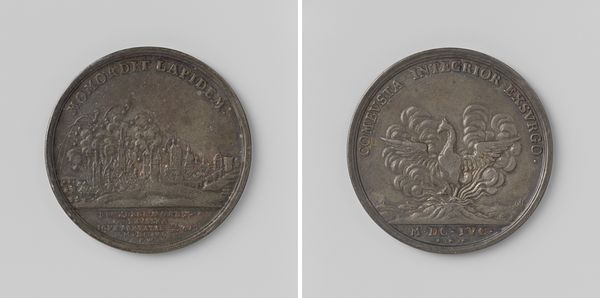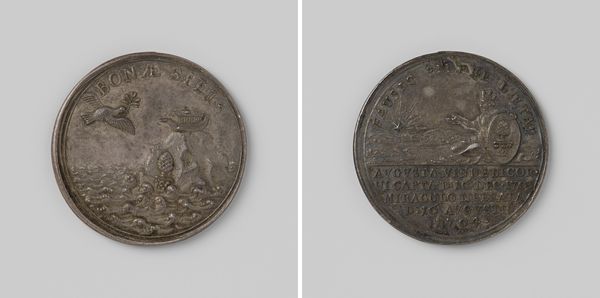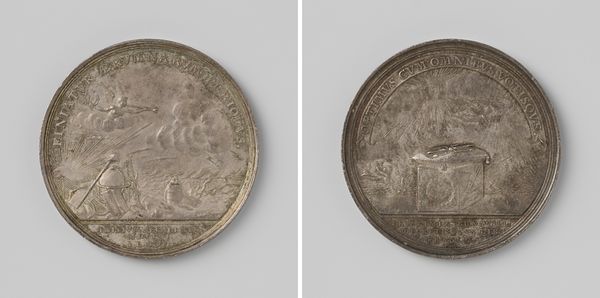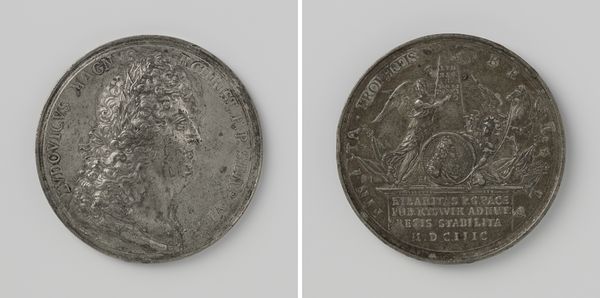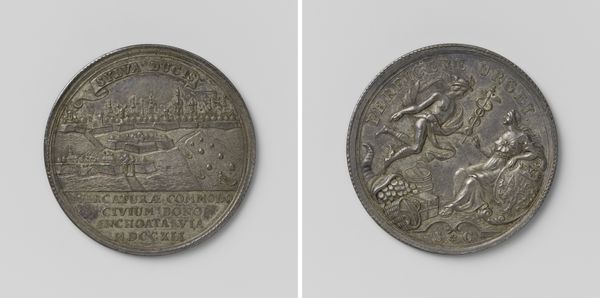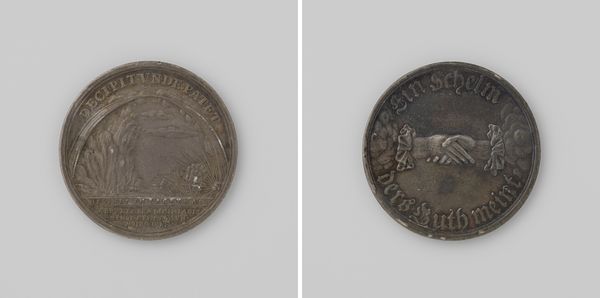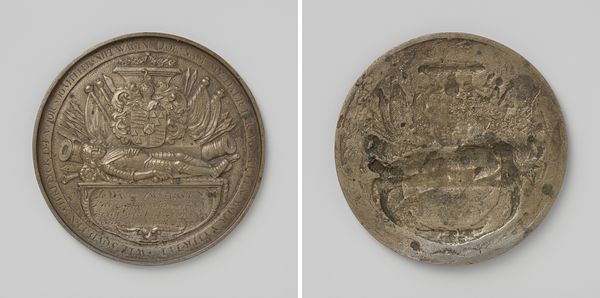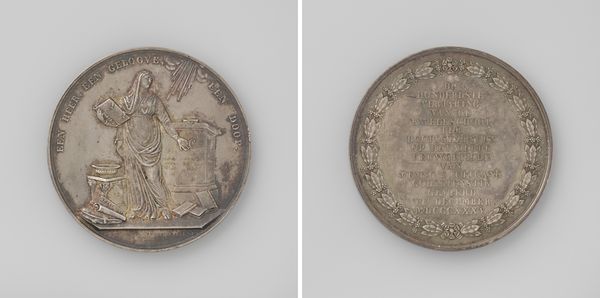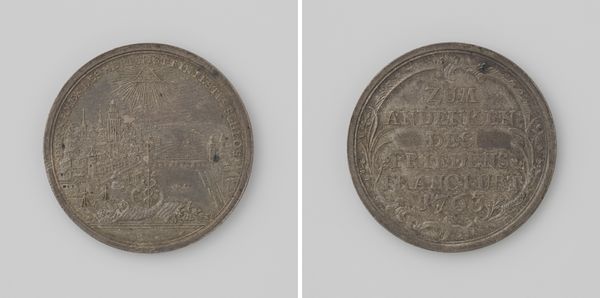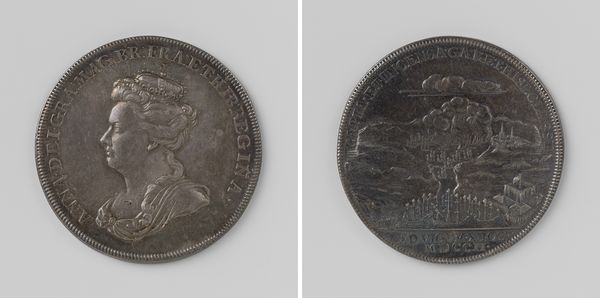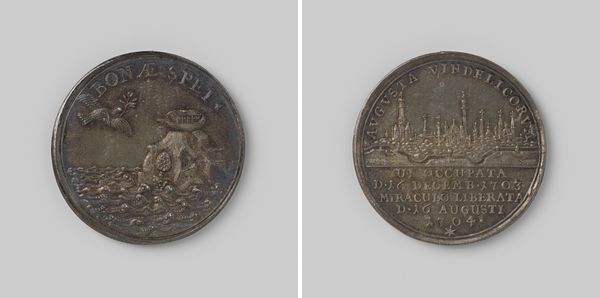
Beloningspenning voor het neerslaan van het aansprekersoproer in Amsterdam 1696 (groot model) 1696
0:00
0:00
metal, relief, sculpture, engraving
#
baroque
#
metal
#
sculpture
#
relief
#
sculpture
#
history-painting
#
engraving
Dimensions: diameter 3.8 cm, weight 25.30 gr
Copyright: Rijks Museum: Open Domain
Editor: Here we have a Baroque medal crafted in metal, titled "Beloningspenning voor het neerslaan van het aansprekersoproer in Amsterdam 1696 (groot model)"—or, "Reward medal for suppressing the aansprekers revolt in Amsterdam, 1696"—created by Jacob van Dishoecke. Its circular shape and raised designs immediately bring coins and ancient Roman cameos to mind, items intended for wide circulation within a population. How do you read this piece? Curator: The function of this piece screams materialist analysis. It's a reward medal – a mass-produced object distributed by the Amsterdam city council after suppressing a revolt. Consider the act of minting itself: controlling the means of production to create these objects which served to enforce their political ideology upon those who displayed and exchanged them. The very materiality of the medal—the specific metal used, the engraving technique, its distribution—all speak to power dynamics. What social statements are made by circulating this kind of commemorative object? Editor: That makes a lot of sense. I hadn't considered how the physical distribution of these medals acted as a form of social control and political narrative. Given the event it commemorates, it feels as if it also sought to rewrite how people might remember it. But what about the imagery itself? The Neptune figure on one side seems somewhat removed from the realities of quelling a workers' revolt. Curator: The use of Neptune, the Roman god of the sea, connects Amsterdam's identity to maritime power and prosperity. So its creators actively sought to portray this revolt against a specific vision of civic stability and, obviously, a hierarchical order maintained, and blessed by, the divine and the ocean that drives trade and secures naval control. Editor: So it's about re-establishing a natural and moral order upset by the revolt. It's interesting to consider the medal, then, as less about remembering an event, and more about promoting a particular ideology regarding civic duty. Curator: Exactly! Thinking about art through the lens of its creation, distribution, and social impact—what I term a materialist analysis—allows us to ask critical questions about the power structures embedded within seemingly simple objects. Editor: I see it now. It truly provides us a valuable glimpse into not just the historical event but the intended shaping of its memory. Thanks for your time.
Comments
No comments
Be the first to comment and join the conversation on the ultimate creative platform.

